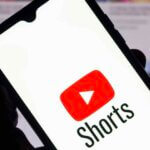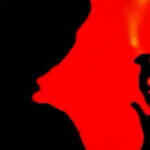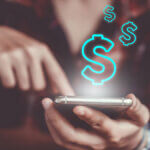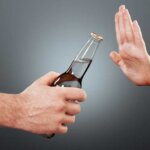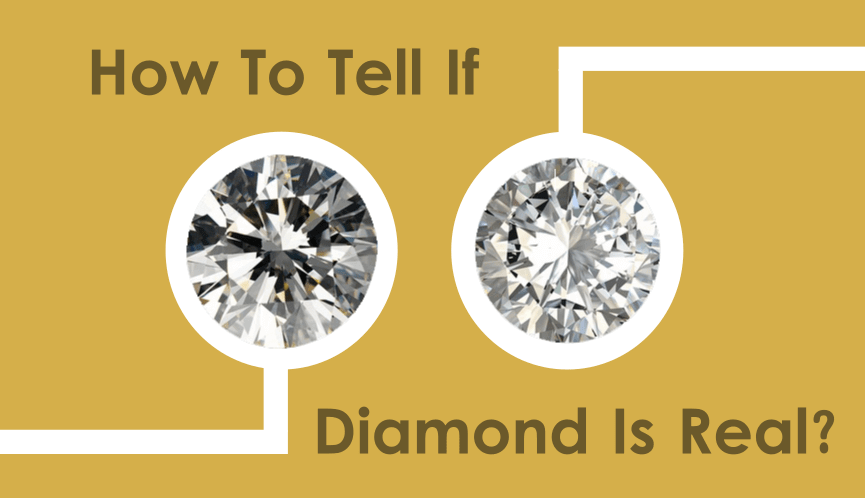Unlocking the Secrets: How to tell if diamonds are real without a tester at Home by eye
Diamonds are highly coveted gemstones, valued for their exquisite beauty and rarity. However, determining whether a diamond is real or fake can be a challenging task, especially without access to specialized testing equipment. Fortunately, there are several simple methods you can employ at home to help you distinguish between genuine diamonds and their imitations. In this article, we will guide you through a few reliable techniques that can assist you in identifying real or fake diamonds without the need for a professional tester.
Unearthing the Truth: Home Tests to Reveal Your Diamond is real or fake
Visual Inspection: One of the initial steps in determining the authenticity of a diamond is to conduct a visual inspection. Consider the following factors:
a) Brilliance and Sparkle: Genuine diamonds possess exceptional brilliance and sparkle. Place the diamond under a bright light and observe how it reflects light. If it exhibits a high level of brilliance with white or colorful flashes, it may be a real diamond. Fake diamonds often lack the same level of sparkle and tend to appear duller.
b) Clarity: Inspect the diamond for any visible flaws or inclusions. Real diamonds usually have fewer imperfections, while synthetic or fake diamonds may exhibit noticeable blemishes, air bubbles, or internal fractures.
c) Refraction: Diamonds refract light in a unique way, resulting in a “rainbow effect” known as dispersion. Hold the diamond up to a light source and observe if it disperses light into spectral colors. If you can see a rainbow-like effect, it is likely a real diamond.
Fog Test: Another simple test involves breathing on the diamond’s surface to create condensation. Follow these steps:
a) Clean the diamond using a lint-free cloth to remove any dirt or debris.
b) Breathe on the diamond as you would when fogging up a mirror.
c) Observe how quickly the fog dissipates.
Real diamonds have high thermal conductivity and disperse heat rapidly, causing the fog to vanish almost instantly. On the other hand, fake diamonds or cubic zirconia may retain the fog for a longer duration.
Water Test: The water test is a useful technique to differentiate between real and fake diamonds based on their density.
a) Fill a glass with water, ensuring it is nearly full.
b) Carefully drop the diamond into the water.
c) Observe how the diamond behaves.
Real diamonds are denser than water, which means they will sink to the bottom of the glass. If the diamond floats or remains suspended near the surface, it is likely a fake.
Heat Conductivity Test: Diamonds are excellent conductors of heat. This test helps evaluate their thermal conductivity:
a) Hold the diamond with a pair of tweezers or a heat-resistant tool.
b) Briefly heat the diamond using a lighter or a candle flame.
c) Immediately drop the diamond into a glass of cold water.
Real diamonds disperse heat rapidly and will not retain heat for long. If the diamond remains cool to the touch after being exposed to heat, it is more likely to be real.
How to Tell if a Diamond Is Real or Fake with a Flashlight
When it comes to determining the authenticity of a diamond, various techniques can be employed, even with basic tools available at home. If you have a flashlight on hand, you can utilize it as a valuable resource to help you assess whether a diamond is real or fake. In this article, we will guide you through a step-by-step process using a flashlight to examine the characteristics of a diamond and make an informed judgment about its authenticity.
Step 1: Gather the necessary materials:
Before proceeding, gather the following items:
- Diamond: The diamond you wish to examine.
- Flashlight: Ensure it is a powerful flashlight with a focused beam for optimal results.
- Clean cloth: Use a lint-free cloth to clean the diamond surface.
Step 2: Prepare the diamond:
Clean the diamond using a clean, lint-free cloth to remove any dirt, oil, or debris that might affect your examination.
Step 3: Find a suitable environment:
Choose a well-lit area with minimal distractions. This will enable you to observe the diamond’s characteristics more clearly when using the flashlight.
Step 4: Observe the diamond’s transparency:
Hold the diamond up to the flashlight and examine its transparency. Real diamonds tend to have exceptional transparency, allowing light to pass through effortlessly. If the diamond appears to be too cloudy or opaque, it may be an indication of a fake or lower-quality diamond.
Step 5: Check for brilliance and sparkle:
A diamond’s brilliance and sparkle are key indicators of its authenticity. Follow these steps:
a) Position the diamond under the flashlight beam. b) Rotate the diamond gently while observing its interaction with light.
Real diamonds will reflect and refract light, resulting in an impressive display of brilliance and sparkle. If the diamond appears lackluster, with minimal light reflections or a dull surface, it may raise doubts about its authenticity.
Step 6: Assess light dispersion:
Diamonds possess a unique ability to disperse light into spectral colors, creating a “rainbow effect” known as dispersion. Follow these steps:
a) Position the diamond in front of the flashlight beam. b) Tilt the diamond slightly to allow light to pass through it.
If you observe a noticeable dispersion of colors, particularly in the form of rainbow flashes, it is more likely that the diamond is real. Fake diamonds generally lack this distinctive dispersion.
Step 7: Evaluate the diamond’s refractivity:
Diamonds refract light in a distinctive manner, bending and reflecting it internally before it exits the stone. You can observe this phenomenon by conducting the following:
a) Hold the diamond upright, pointing the pavilion (bottom) towards the flashlight. b) Look through the table (top) of the diamond from the side.
If you observe a reflection or pattern of facets within the diamond, it suggests a higher probability of it being real. Fake diamonds tend to have flat or uniform internal reflections.
How to Tell if a Diamond Is Real or Fake with a Mirror
In this section, we will provide a step-by-step guide on how to tell if a diamond is real with a mirror
Step 1: Gather the necessary materials: Before you begin, ensure you have the following items ready:
- Diamond: The diamond you wish to examine.
- Mirror: A clean and preferably large mirror that provides a clear reflection.
- Clean cloth: Use a lint-free cloth to clean the diamond and mirror surface.
Step 2: Prepare the diamond and mirror:
Clean both the diamond and the mirror using a clean, lint-free cloth. This ensures that no dust, oil, or debris interferes with your examination.
Step 3: Choose an appropriate environment:
Select a well-lit area with good lighting conditions. Sufficient lighting is crucial for accurate observation of the diamond’s characteristics during the examination process.
Step 4: Observe the diamond’s transparency:
Hold the diamond in front of the mirror and examine its transparency. Genuine diamonds typically possess excellent transparency, allowing light to pass through easily. If the diamond appears cloudy, hazy, or lacks transparency, it may indicate a fake or a lower-quality diamond.
Step 5: Check for brilliance and sparkle:
The brilliance and sparkle of a diamond are key indicators of its authenticity. Follow these steps:
a) Hold the diamond in front of the mirror, with the table (top) facing you. b) Observe the diamond’s interaction with light reflected in the mirror.
Real diamonds reflect and refract light, resulting in a brilliant and sparkling appearance. If the diamond exhibits strong light reflections and scintillation, it suggests a higher probability of it being real. On the other hand, if the diamond lacks sparkle or appears dull, it may raise doubts about its authenticity.
Step 6: Assess the diamond’s reflection:
Place the diamond flat on the mirror’s surface and examine its reflection. Real diamonds tend to have a high refractive index, resulting in a sharp and distinct reflection. Pay attention to the following:
a) Observe how the diamond reflects light in the mirror. b) Look for a clear and crisp reflection without any distortions or haziness.
If the diamond reflects light sharply and clearly, maintaining its integrity and shape in the reflection, it is more likely to be real. However, if the reflection appears distorted, blurred, or lacks precision, it may indicate a fake diamond.
General Question Asked By Peoples
How to Determine If a Diamond Is Genuine Through Sparkle Testing?
To describe the beauty of diamonds, one can conduct a simple test without a magnifying glass. By holding the gemstone under a lamp, the refraction of white light can be observed. Genuine diamonds are renowned for their twinkling and glistening appearance, which is what makes them so captivating. Conversely, counterfeit diamonds will appear lackluster in comparison.
How to Tell if a Diamond Ring is real or fake Through Its Setting?
While not definitive, a quick way to identify a fake ring is to examine the setting. Typically, authentic diamonds are seated in precious metals such as white gold, yellow gold, or platinum. The inside of the band will usually have a stamp indicating the karat value of the gold (such as 10K, 14K, or 18K) or the word ‘PT’ or ‘Plat’ for platinum. If no such marking is present, there is a high probability that the stone is a fake.
How to Tell if a Diamond Is Real Using a Diamond Tester ?
If you are knowledgeable about gemstones and willing to buy equipment online, you can utilize a thermal conductivity probe (also known as a diamond tester) to test whether your diamond is real or not. This device determines the level of conductivity in your stone. However, it is worth noting that moissanite has similar thermal properties as diamonds, so a secondary electrical conductivity test is required to differentiate between moissanite and a genuine diamond.
I am Komal Hatwaani, aims to provide readers with informative and engaging content that covers everything from technology and business to entertainment and lifestyle. This website dedicated to delivering high-quality content that informs, entertains, and inspires our readers.
Join us on our journey as we continue to explore the ever-evolving landscape of news and information, providing you with valuable insights and perspectives that enrich your digital experience.


